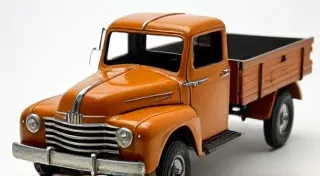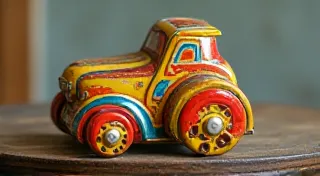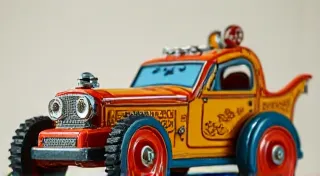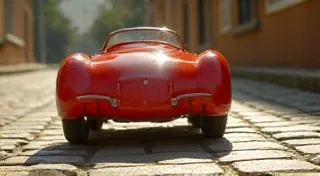Japanese Tinplate Toys: A World of Charm
For collectors of vintage toy cars and other antique toys, few categories hold quite the allure of Japanese tinplate toys. Emerging primarily in the post-World War II era, these charming creations represent a unique blend of artistry, engineering ingenuity, and a delightful touch of whimsy. This article delves into the fascinating world of Japanese tinplate toys, exploring their history, distinctive features, notable manufacturers, and offering some collecting tips for enthusiasts.
The Rise of Japanese Tinplate Toys
Prior to World War II, toy production largely dominated by European and American manufacturers. However, the war dramatically reshaped global manufacturing. Japan, initially a key supplier of raw materials to these powers, found itself rebuilding its economy. Driven by resourceful entrepreneurs and a skilled workforce, the toy industry quickly emerged as a significant sector. Tinplate, readily available and relatively inexpensive, became the material of choice. Unlike the often-larger, heavier cast iron toys prevalent before, tinplate allowed for lighter, more intricate designs suitable for smaller hands and a burgeoning consumer market.
The initial post-war years saw Japanese toy manufacturers heavily influenced by American and European designs. However, as the industry matured, a distinctly Japanese aesthetic began to evolve – one characterized by vibrant colors, playful characters, and a touch of elegance. The rise of television and popular culture, both domestic and imported, also profoundly influenced toy designs, leading to an explosion of licensed characters and themes.
The 1950s and 1960s are generally considered the golden age of Japanese tinplate toy production. This period witnessed a phenomenal outpouring of innovative and beautifully crafted toys, many of which are highly sought after by collectors today.
Distinctive Characteristics and Designs
Japanese tinplate toys possess several characteristics that set them apart. These include:
- Intricate Designs: Japanese toys were often remarkably detailed, featuring beautifully hand-painted details, working mechanisms (such as wind-up mechanisms or friction drives), and often, impressive levels of realism, particularly in representations of vehicles.
- Bright and Bold Colors: Unlike the often-muted tones of European toys, Japanese tinplate toys often boasted vibrant, eye-catching colors – reds, yellows, blues, and greens were commonly employed.
- Wind-up Mechanisms: Many Japanese tinplate toys were powered by wind-up mechanisms, adding a dynamic element to playtime. The sounds and movements of these toys were often a key part of the appeal.
- Friction Drives: Friction drive mechanisms, where pushing the toy forwards initiated movement, were also common, offering a simpler alternative to wind-up operation.
- Sound Effects: Cleverly incorporated sound effects – such as horns, sirens, and engine noises – further enhanced the realism and entertainment value of these toys.
- Unique Body Shapes and Styles: While replicating real-world vehicles was a popular theme, Japanese manufacturers also created a plethora of fantasy vehicles and characters – whimsical robots, fantastical cars, and miniature spaceships were all common.
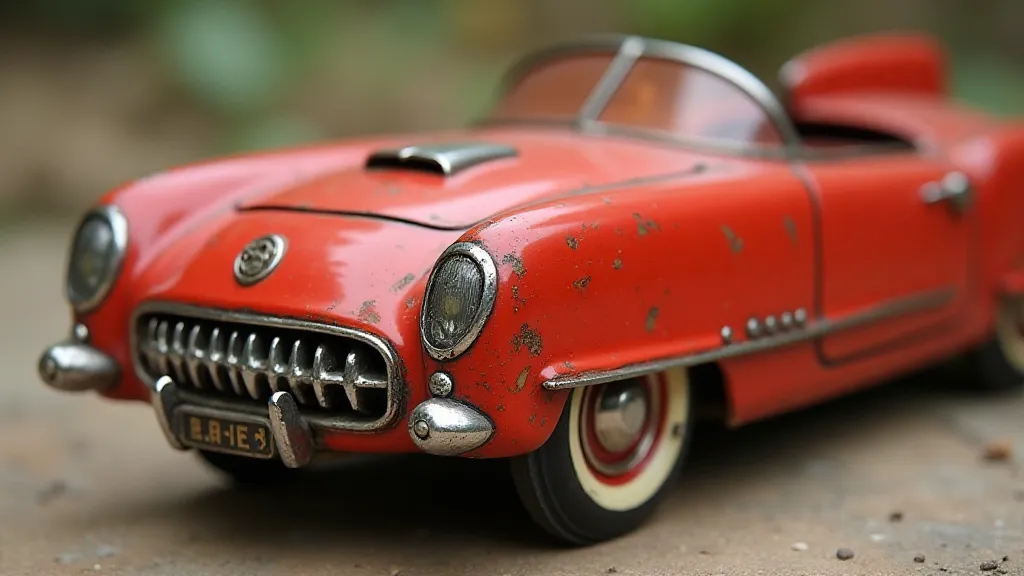
Key Manufacturers and Their Signature Styles
Several manufacturers played pivotal roles in shaping the landscape of Japanese tinplate toy production. Understanding their individual styles is crucial for collectors.
- Marukai: Known for their robust construction and often featuring depictions of American cars and trucks. Marukai toys are typically well-regarded for their quality and durability.
- Nomura: Nomura was renowned for their incredibly detailed and often comical designs. Many Nomura toys featured characters and themes from popular culture. Their "Gig & Joy" line, featuring whimsical, battery-operated toys, remains extremely desirable.
- Aloka: Aloka specialized in more sophisticated, higher-end toys, often featuring working lights and elaborate mechanisms.
- Kanei: Kanei produced a wide range of toys, from simple wind-ups to more complex battery-operated models. They are known for their vibrant colors and appealing designs.
- Yonezawa: Yonezawa was a prolific manufacturer, producing everything from wind-up cars to battery-operated robots. They often incorporated sound effects and flashing lights into their toys.
- Takahama: Takahama's focus was more on mechanical toys, particularly robots and spacemen, demonstrating a fascination with science fiction themes.
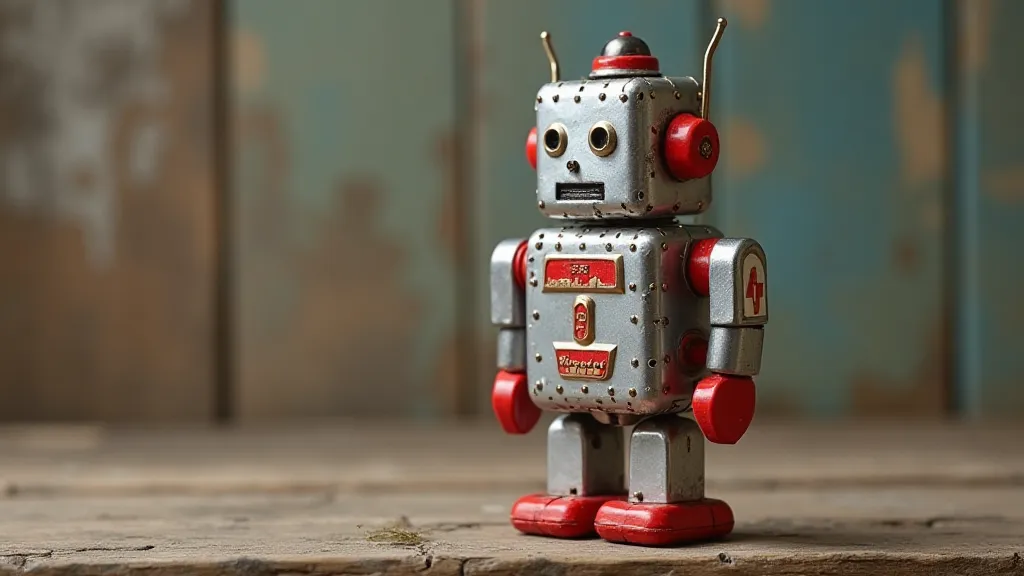
Collecting Tips for Enthusiasts
Collecting Japanese tinplate toys can be a rewarding, but sometimes challenging, endeavor. Here are a few tips for prospective collectors:
- Research: Familiarize yourself with the major manufacturers and their signature styles. This will help you identify authentic pieces and understand their relative rarity.
- Condition is Key: The condition of a toy significantly impacts its value. Look for pieces with original paint, minimal rust, and working mechanisms. However, signs of age and wear can add to the charm and character of a toy.
- Original Boxes: Toys in their original boxes are significantly more valuable than those without. Boxes often provide valuable information about the toy's origin and production date.
- Beware of Reproductions: The popularity of Japanese tinplate toys has led to the creation of reproductions. Carefully examine the toy’s construction and markings to ensure authenticity.
- Join Collecting Communities: Connect with other collectors online or in person. Sharing knowledge and experiences is invaluable.
- Start Small: Begin your collection with a specific manufacturer or theme to avoid feeling overwhelmed.
Values can vary wildly, from a few dollars for common, damaged toys to hundreds or even thousands of dollars for rare and pristine examples. The market is driven by rarity, condition, and desirability.
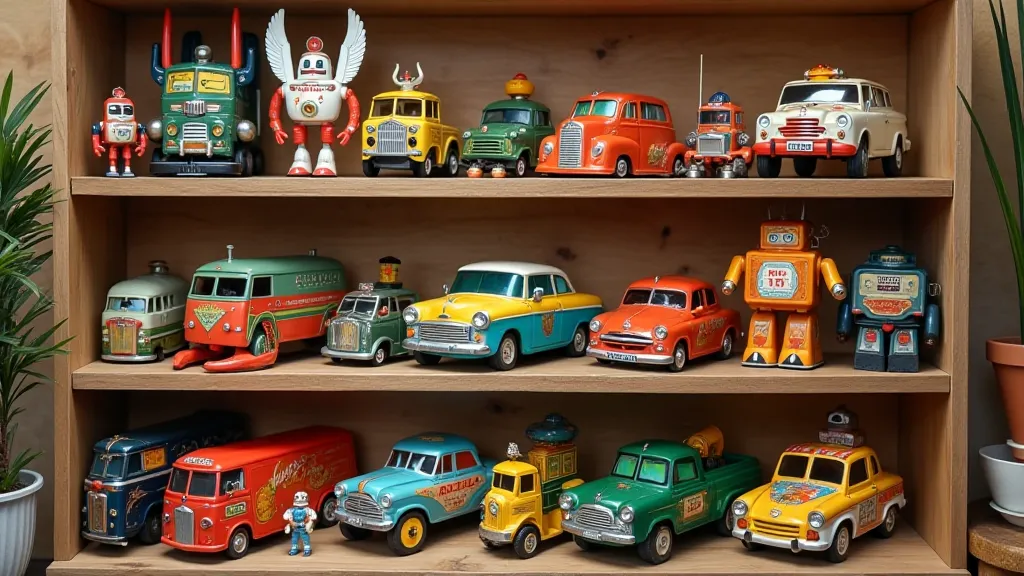
Conclusion
Japanese tinplate toys represent a fascinating chapter in toy history. Their unique designs, playful charm, and innovative engineering continue to captivate collectors worldwide. Whether you're a seasoned enthusiast or just starting your collecting journey, exploring the world of Japanese tinplate toys is sure to bring a sense of joy and wonder. The legacy of these charming creations endures, a testament to the creativity and craftsmanship of a bygone era.
